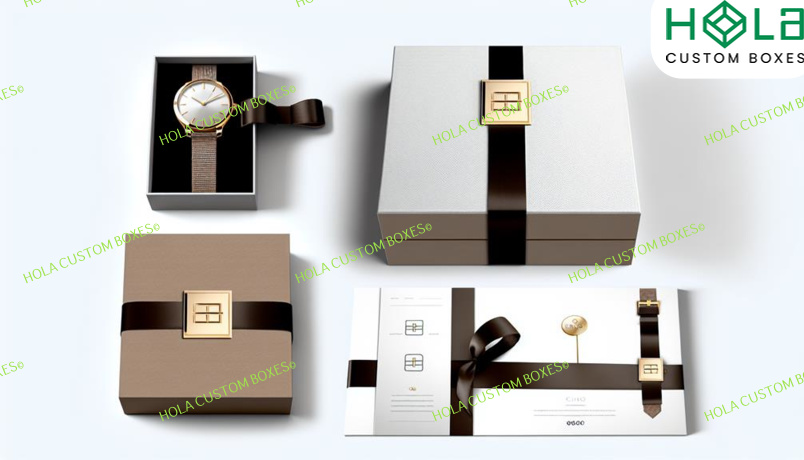5 Best Practices for Custom Packaging Safety Regulations To Enhance Product Protection
2025-08-11 15:12:31.jpg)
Key practices for custom packaging safety regulations include material selection prioritizing durability and protection, size optimization for safe shipping to prevent damage, cushioning techniques tailored to product needs, compliance with specific regulations, and accurate labeling for safety and branding. These practices are essential in ensuring product integrity, reducing risks, and enhancing customer satisfaction.
Main Points
- Ensure packaging design complies with safety regulations.
- Incorporate specific barrier properties as required.
- Provide regular training to maintain regulatory compliance.
- Tailor packaging solutions to meet unique product needs.
- Accurately label packages for hazard identification and handling instructions.
Material Selection for Packaging Safety

When considering material selection for packaging safety, it is vital to prioritize durability, cushioning, and protective properties to guarantee the safe transportation of safety equipment in compliance with regulations. Corrugated cardboard stands out as a dependable choice due to its durability, making it ideal for heavy or fragile safety equipment. The strength of corrugated cardboard ensures that the contents are well-protected during shipping, reducing the risk of damage.
Moreover, foam inserts play an essential role in providing cushioning and protection. By absorbing shocks and vibrations, foam inserts help safeguard safety equipment from potential impacts during transit.
In addition, incorporating bubble wrap into the packaging adds an extra layer of protection, preventing scratches, dents, or other surface damage. By carefully selecting materials like corrugated cardboard, foam inserts, and bubble wrap, businesses can guarantee safe delivery while adhering to safety regulations, ultimately prioritizing the integrity and protection of the shipped safety equipment.
Size Optimization for Safe Shipping

Efficient size optimization in packaging is a critical component of guaranteeing the safe shipping of safety equipment, as it minimizes costs, reduces waste, and enhances product protection. Right-size packaging plays a crucial role in reducing shipping costs and minimizing waste by eliminating excess material. Choosing appropriate packaging dimensions ensures that products fit securely, helping prevent damage during transit. Custom-sized packaging tailored to the dimensions of safety equipment enhances protection and maintains product integrity throughout the shipping process.
Optimizing package size not only improves efficiency in handling, storage, and transportation but also contributes to overall cost savings and streamlined logistics. By employing efficient size optimization practices, companies can achieve safer shipping, lower shipping costs, and ensure the integrity of the safety equipment being transported. Prioritizing the correct packaging size is a fundamental aspect of maintaining product safety and reducing logistical expenses.
Cushioning Techniques for Product Protection
Utilizing appropriate cushioning techniques is paramount in safeguarding products during shipping, as it helps mitigate damage risks from impacts, drops, and vibrations in transit. Customized packaging solutions often involve the use of various cushioning materials such as foam inserts, bubble wrap, and air pillows to protect products effectively. The selection of cushioning materials should be based on factors like product fragility, weight, and size to guarantee maximum protection during transit.
Effective cushioning techniques not only prevent damage but also help maintain product integrity, reduce returns, and enhance customer satisfaction. By investing in proper cushioning methods, businesses can significantly minimize product damage risks, leading to safe delivery and improved customer experiences. It is essential for companies to prioritize the implementation of sound cushioning strategies within their customized packaging solutions to uphold product quality and ensure customer satisfaction throughout the shipping process.
Compliance With Safety Regulations

Adherence to safety regulations in packaging practices is a critical component in ensuring the protection of products and personnel during transportation. Packaging design must align with regulations to provide the necessary protective shell for items, especially hazardous materials. Regulations stipulate specific requirements such as barrier properties to prevent leaks or contamination. Best practices involve regular training to guarantee compliance with these regulations, reducing the risk of fines and legal consequences. Custom packaging plays a key role in meeting these standards, tailoring solutions to the unique needs of different products.
Labeling is another important aspect of compliance with safety regulations. Accurate and clear labeling is essential for identifying hazardous materials and providing handling instructions. Failure to comply with labeling requirements can lead to rejected shipments and jeopardize brand reputation. Keeping up-to-date with evolving regulations is imperative to maintain compliance and avoid potential delays in shipments. Overall, following safety regulations in packaging practices is not only a legal obligation but also a strategic business decision to safeguard products, personnel, and brand integrity.
Why Packaging Matters in a Crowded Market
In today’s fast-paced and competitive marketplace, brands need more than just a great product to get noticed—they need packaging that captivates. Custom boxes with logos have the power to turn ordinary items into irresistible must-haves. From vibrant colors that catch the eye to unique shapes that spark curiosity, every design choice can make your brand stand out. Premium materials convey quality, while consistent branding builds trust and loyalty.
Turning Packaging into a Brand Experience
Memorable packaging doesn’t just protect your product—it tells a story and creates an emotional bond with customers. When your design resonates, it inspires sharing, strengthens brand recognition, and makes it easier for consumers to choose you over competitors. In a world full of options, great packaging can be the difference between blending in and shining brightly on the shelves.
Conclusion
To sum up, adherence to safety regulations and best practices in custom packaging is vital for ensuring the protection of products during shipping and handling. Material selection, size optimization, cushioning techniques, compliance with safety regulations, and accurate labeling are key factors that contribute to the overall safety of custom packaging.
By implementing these best practices, businesses can mitigate risks and enhance the safety and security of their products throughout the supply chain.
